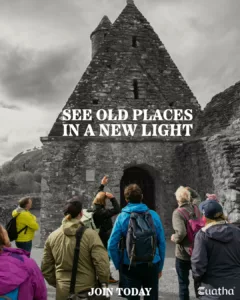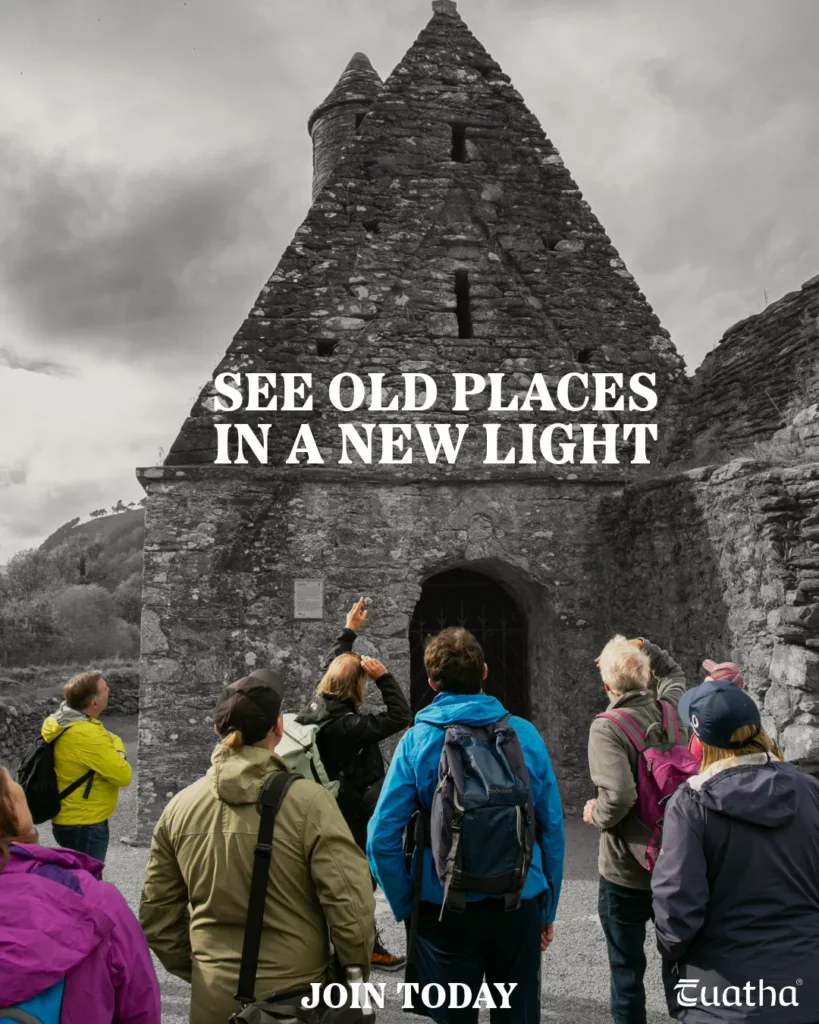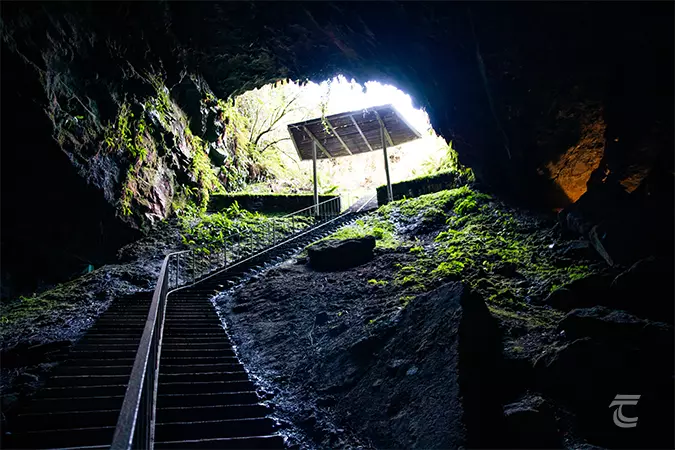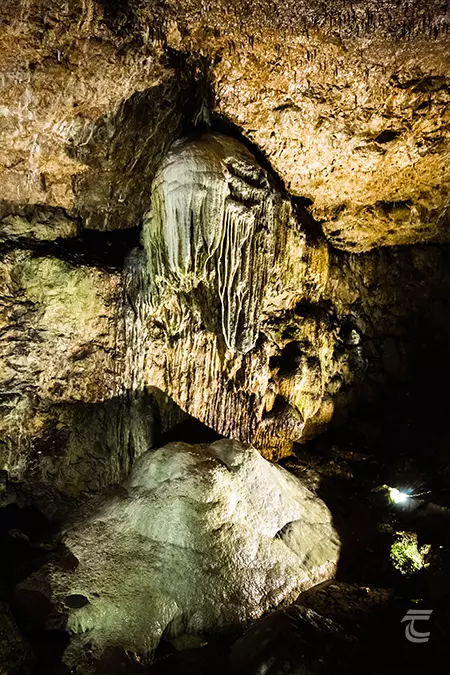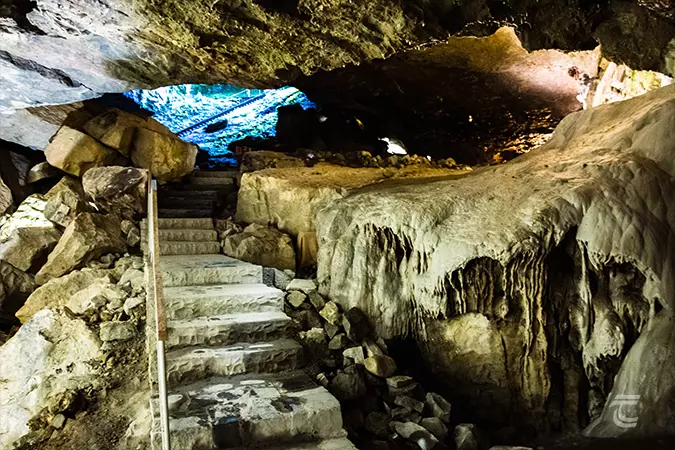Dunmore Cave
Dunmore Cave has a complex and occasionally fantastical history. It is situated approximately 11km north of Kilkenny city, not far from the town of Castlecomer. The cave – temporarily closed to the public, but due to be reopened in 2023 – contains around 300 metres (984 ft) of known passages and caverns. In terms of geology, it is a rare example of a cave as formed directly by glacial meltwaters. Although not a particularly large cave system, Dunmore has a number of great examples of calcite formations, such as stalagmites and stalactites. However, the cave’s interest comes not just from its geology; but from its dark history and its associations with the Vikings.
Located in the north of County Kilkenny, in the ancient Irish kingdom of Ossory, Dunmore Cave was situated right in the middle of a disputed territory between the Viking powerbases of Dublin, Waterford and Limerick. The Vikings of Ireland were not one people with united aims and ambitions, under one government, but were instead rival powers who regularly came into conflict with each other. A story connected to Dunmore Cave highlights just how deadly that rivalry could be. Multiple sources record a Viking massacre in AD 930 (or 928) at a place called Derc Ferna which is believed or assumed to be an older name for Dunmore Cave. It was certainly known as that by people in the locality in the 19th century.
The Annals of Innisfallen tell of ‘Gothfrith, grandson of Ímar, with the foreigners of Áth Cliath, razed Derc Ferna—something unheard of from ancient times’, something similarly repeated in the Annals of Ulster. Chronicon Scotorum recorded ‘The besieging of Derc Ferna and its taking in which one thousand men die.’ These accounts are reinforced further by the Annals of the Four Masters: ‘Godfrey, grandson of Imhar, with the foreigners of Ath-cliath, demolished and plundered Dearc Fearna, where one thousand persons were killed in this year, as is stated in this quatrain: Nine hundred years without sorrow, twenty-eight, it has been proved, Since Christ came to our relief, to the plundering of Dearc-Fearna.’
One tale describes how the Vikings descended into the cave and slaughtered all within. Another commonly told version of the story describes how a raiding band of Vikings discovered a large number of people (mainly women and children) hiding in the cave at Dunmore. In an attempt to drive them from the cave, they lit large fires, hoping to smoke out those in hiding in order to capture them and sell them in the slave markets. However, the fires were too large, their flames swallowed all the oxygen in the deep cave, so many suffocated to death.
Antiquarians in the 18th and 19th centuries collected large quantities of human remains from within the cave, long presumed to be those of the people massacred in that raid. However, reappraisal of the site in recent years has questioned this old belief. Perhaps the story of the cave is not quite as dark as once believed. For a more detailed discussion on the evidence, read on!
For practical information about visiting this site Click Here
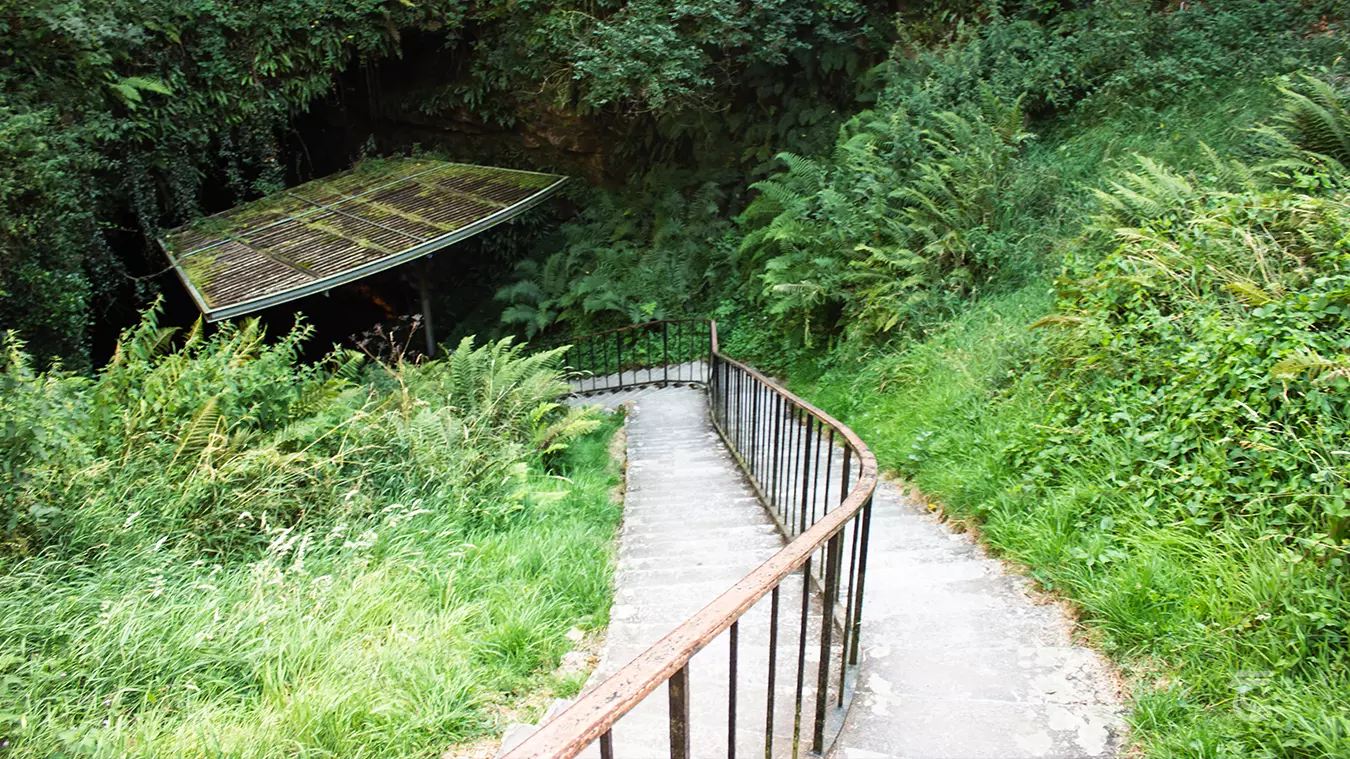
The staircase leading to Dunmore Cave • Kilkenny
Dunmore Cave: The scene of a massacre or a Scandinavian sacred space?
Unfortunately many of those remains discovered in the 18th–19th centuries have been lost to science, and possibly reburied elsewhere. However, there has been more recent work by Dr Marion Dowd who excavated in the cave in 2004. The analysis of the human remains from these excavations and the surviving material from earlier digs by Dr Lynda Lynch has identified around 50 individuals ranging from very small infants, children, juveniles and male and female adults.
What is really interesting about this detailed analysis of the human remains is that none of them show any signs of violence, which puts it at odds with the traditional story of a massacre. While a lack of evidence for trauma appears to cast doubt on the story of the Vikings brutally slaughtering those hiding in the cave, it does not discount that people may have suffocated due to fires, as in the second version of the tale. However no evidence of burning was found anywhere near the cave mouth, and the large complex size of the cave would keep the air circulating, casting doubt on this version of the story.
Despite these questions, the Viking association with Dunmore is undeniable. A large number of Viking-style artefacts have been found in the cave, mainly items of personal dress like beads, pins, bracelets and so on, perhaps worn by those whose skeletal remains were found here. So if it was a massacre of Irish people by the Vikings, why does so much of the artefactual assemblage suggest that it was the Viking themselves who were interred within the cave?
Rather than the scene of a massacre, it appears perhaps more likely that Dunmore Cave was a Viking burial place, a sacred space for loved ones to rest. This is paralleled by Cloghermore Cave in County Kerry, and shows that some Scandinavian communities in Ireland sought out caves to use for this purpose. Though it appears from the evidence that there was a variety of activity happening at Dunmore Cave.
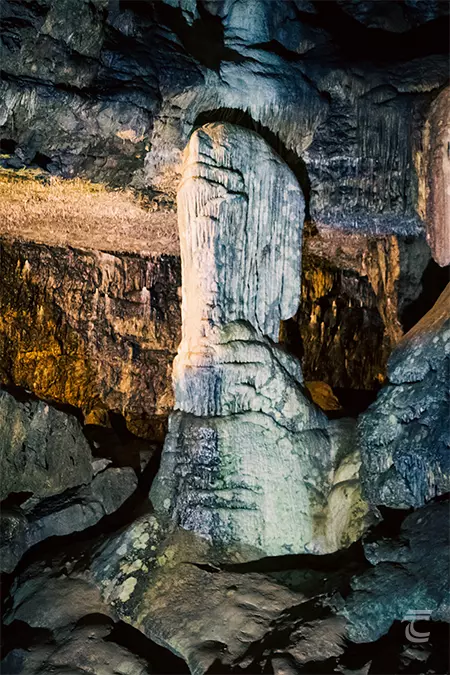
The Market Cross in Dunmore Cave • Kilkenny
The Vikings at Dunmore Cave – A Robber’s Lair?
Interestingly, two Viking hoards were found in Dunmore Cave. A small collection of coins were found in the part of the cave known as the Market Cross Chamber, they are believed to date to around AD 930 – co-incidentally the same year as the recorded Viking attack. A second hoard dated to AD 965 was found by one of the OPW guides in a crevice in the Town Hall Chamber, along with a garment of rare purple silk, and consisted of 15 or so Anglo-Saxon coins, woven wire buttons and other decorative dress items with a silver ingot and copper alloy ingots.
Joanne O’Sullivan analysed the beads from Dunmore Cave, and identified them as being of very high status, and likely to have been imported along the Viking trade routes from Russia or Central Asia. It’s hard to know whether these costly depositions were ever intended to be retrieved, or whether they were some sort of offering to the chthonic gods of the underworld.
There is a suggestion that the Vikings used caves as a temporary hideouts during raiding seasons, with evidence of possibly plundered artefacts found at Kilgreany Cave in Waterford or Park North Cave in Cork, and there is further evidence from the Alice & Gwendoline Cave in Clare, and more again from Iceland. Perhaps this is a little like the famous story of Ali Baba and the 40 Thieves who had their lair deep in a hidden cave. It is reasonable to consider at least the later deposition of high status objects here in Dunmore in such a light, but given the amount of human remains in the cave there is also the distinct possibility that these high value items may well have been grave goods.
In this short clip from the Tile Films RTÉ Production: Fire and Blood: The Vikings in Ireland, archaeologist and Tuatha founder Neil Jackman descends into the dark of Dunmore Cave, while Dr Pat Wallace, former Director of the National Museum of Ireland, discusses the silver hoard that was found in the cave.
Dunmore Cave – The Descent into the Underworld
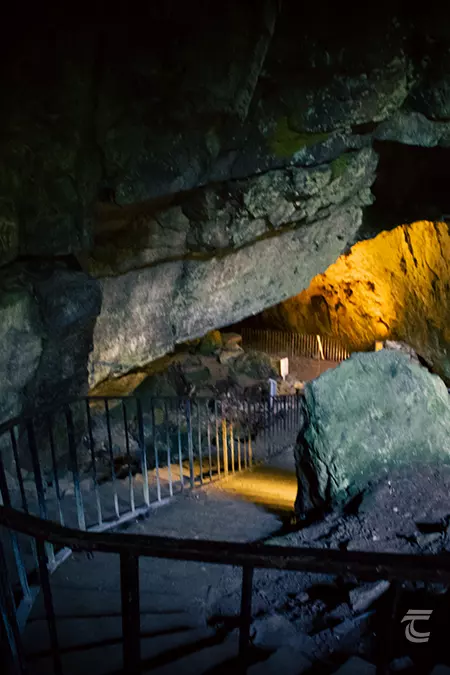
The interior of Dunmore Cave • Kilkenny
Caves have not only been important throughout all of human history, but indeed even into earlier hominid species. From at least the Upper Palaeolithic Period onwards, people ventured to the deepest and darkest parts of caves, far beyond the light of the entrance, as a place of ritual and ceremony. At places like the Lascaux Caves stunning art was painted onto the contours and features of the cave to make the depictions of animals seem to come alive in the firelight.
In many cultures, caves and darkness are abodes of the dead or the gods, such as Hades in the Greek Myths. We have long told these stories of the underworld – one of humanity’s oldest surviving tales The Epic of Gilgamesh was first incised around 1800 BC, and tells the story of the Sumerian hero Enkidu who reappeared from a long imprisonment underground in the Netherworld. Similar journeys end as darkly for Orpheus, Hercules and Aeneas as they do for their counterparts in Finnish, Inuit, Aztec, Mayan and Hindu mythology. In Ireland, Oweynagat (Cave of the Cats) at Rathcroghan has strong associations with the Morrigan and the otherworld. When you cross the liminal space of the cave mouth, you cross into another plane, a true underworld. I highly recommend the excellent book The Archaeology of Darkness by Dr. Marion Dowd and Dr. Robert Hensey for a fascinating discussion of humanity’s interaction with caves and the darker places of the world. You can also hear Marion discuss Cave Archaeology on this episode of our Amplify Archaeology Podcast.
Upper left: glimpsing sunlight through the entrance of the cave • Lower left: steps through the cavern • Right: geological features of Dunmore Cave
Top: glimpsing sunlight through the entrance of the cave • Middle: geological features of Dunmore Cave • Bottom: steps through the cavern
Dunmore Cave Visitor Information
The dark depths of Dunmore Cave offer an intriguing historical mystery. Was it truly the scene of a massacre or a sacred Viking burial ground?
